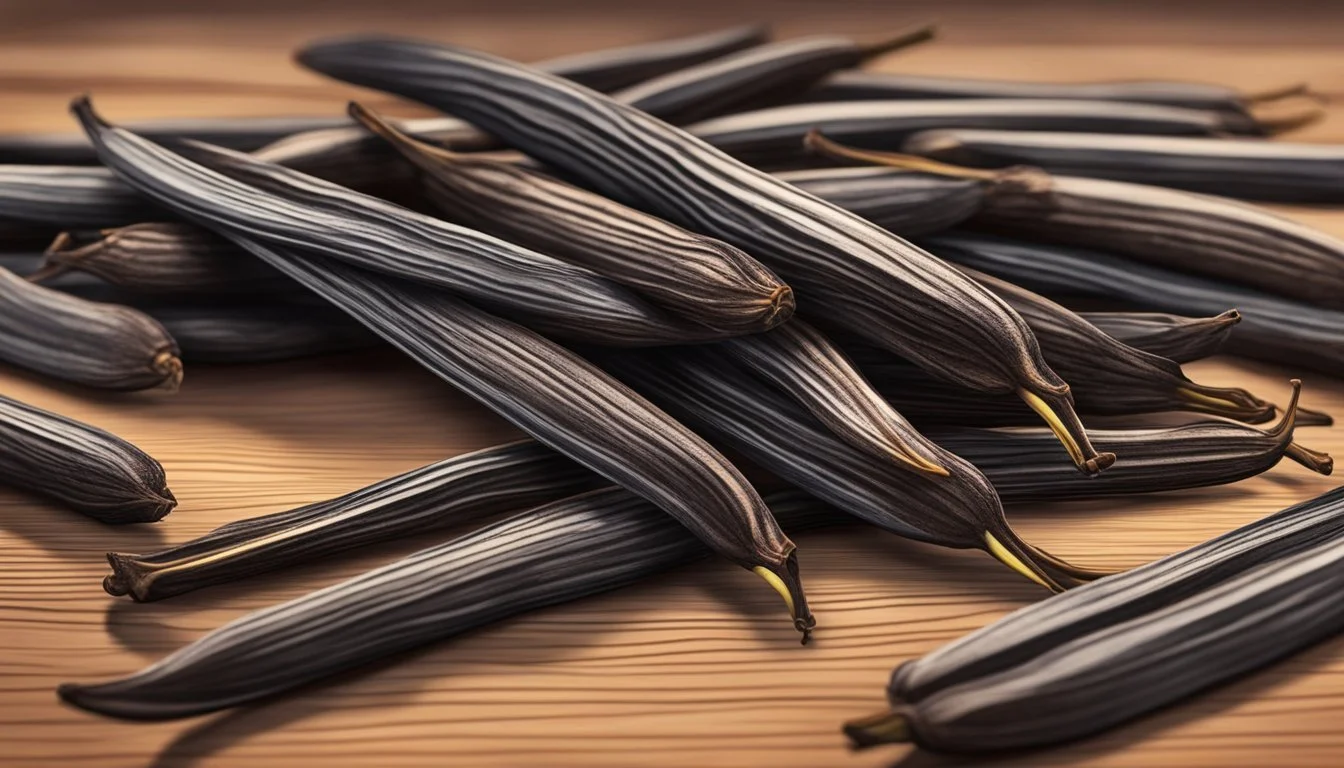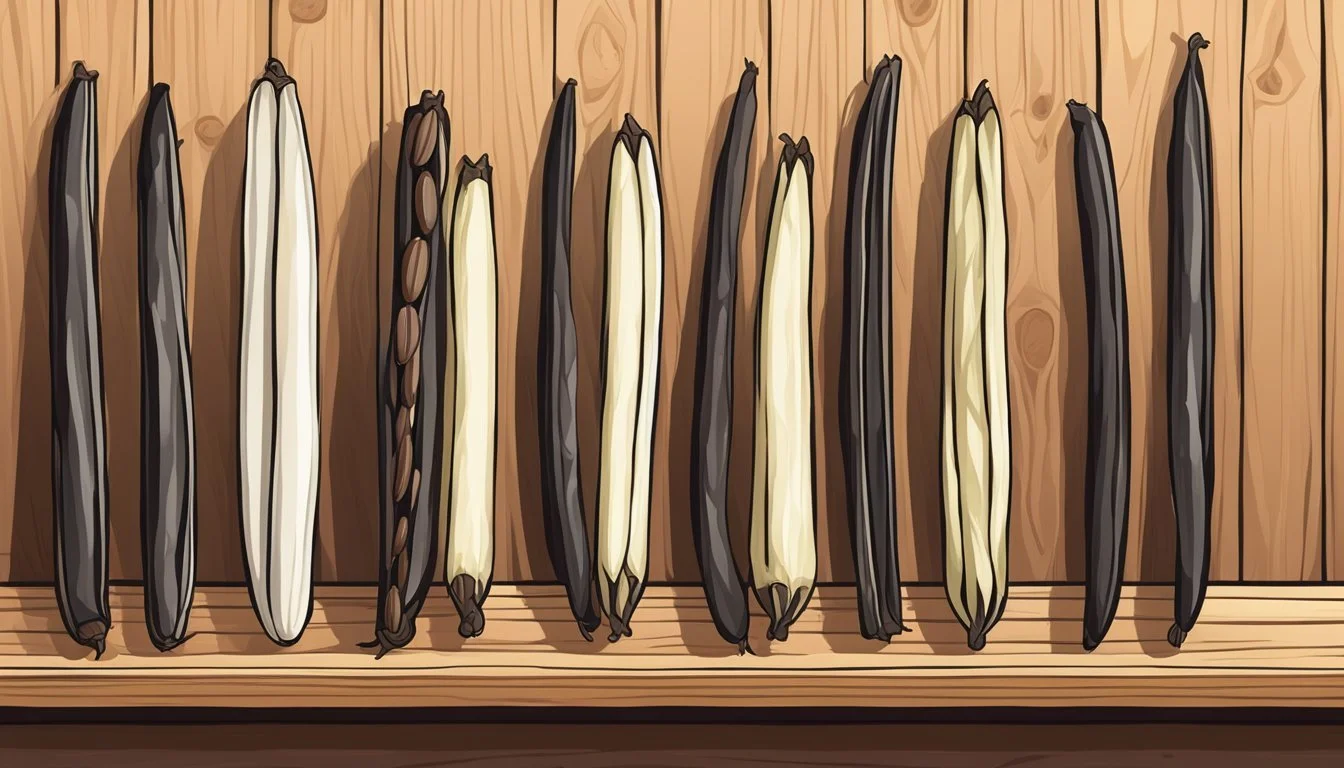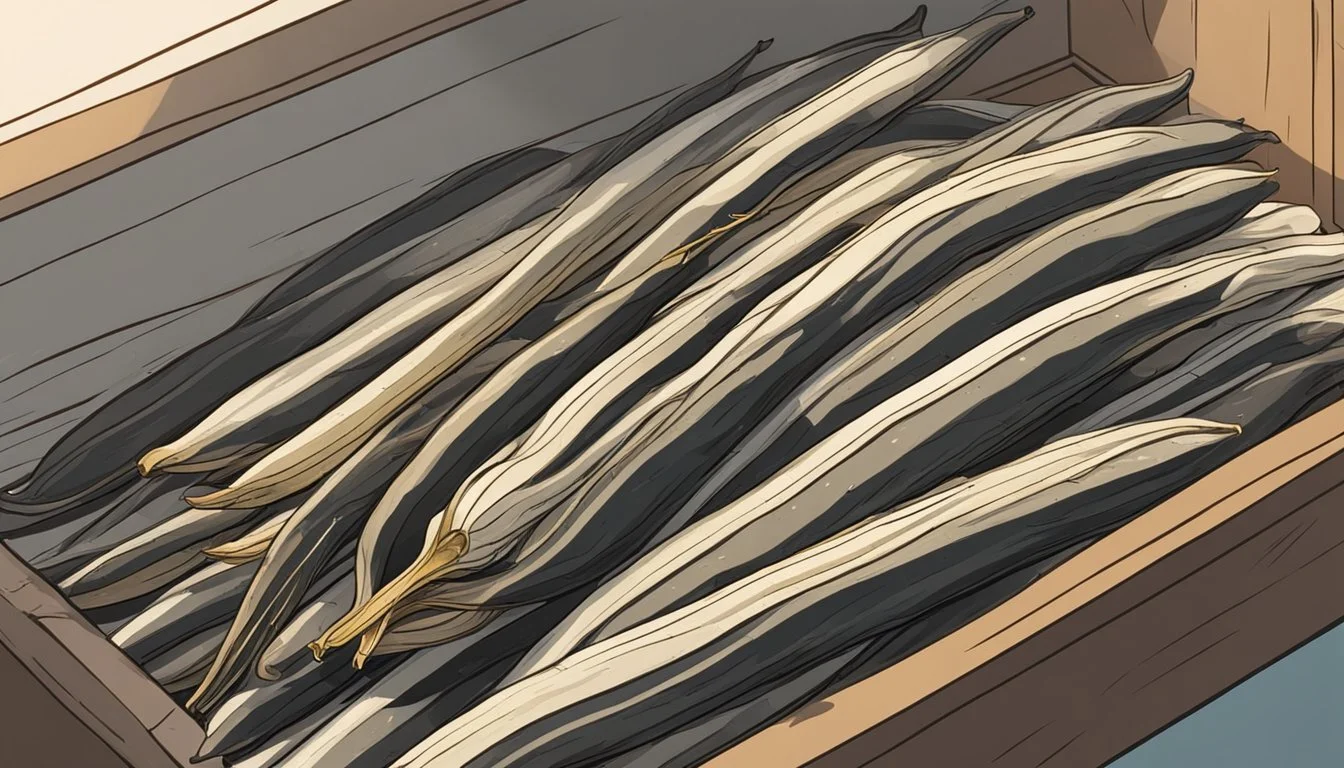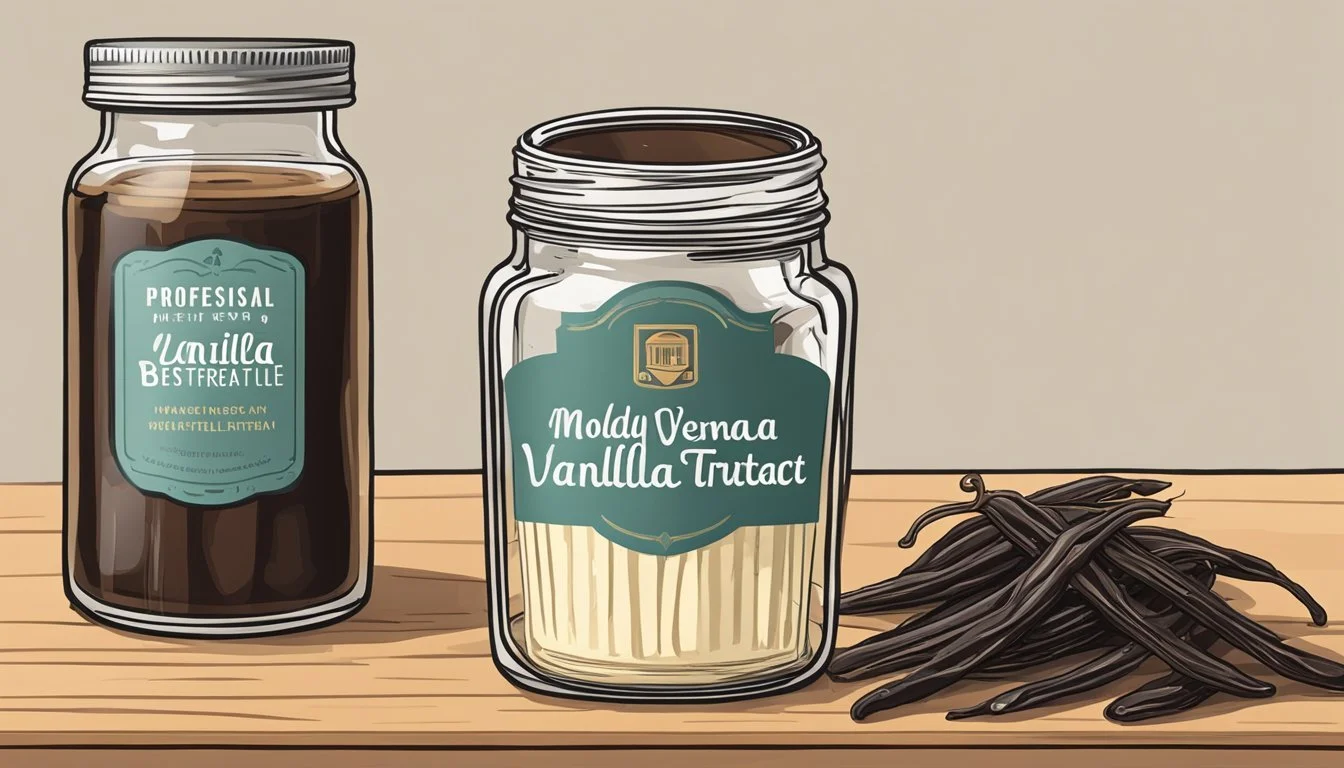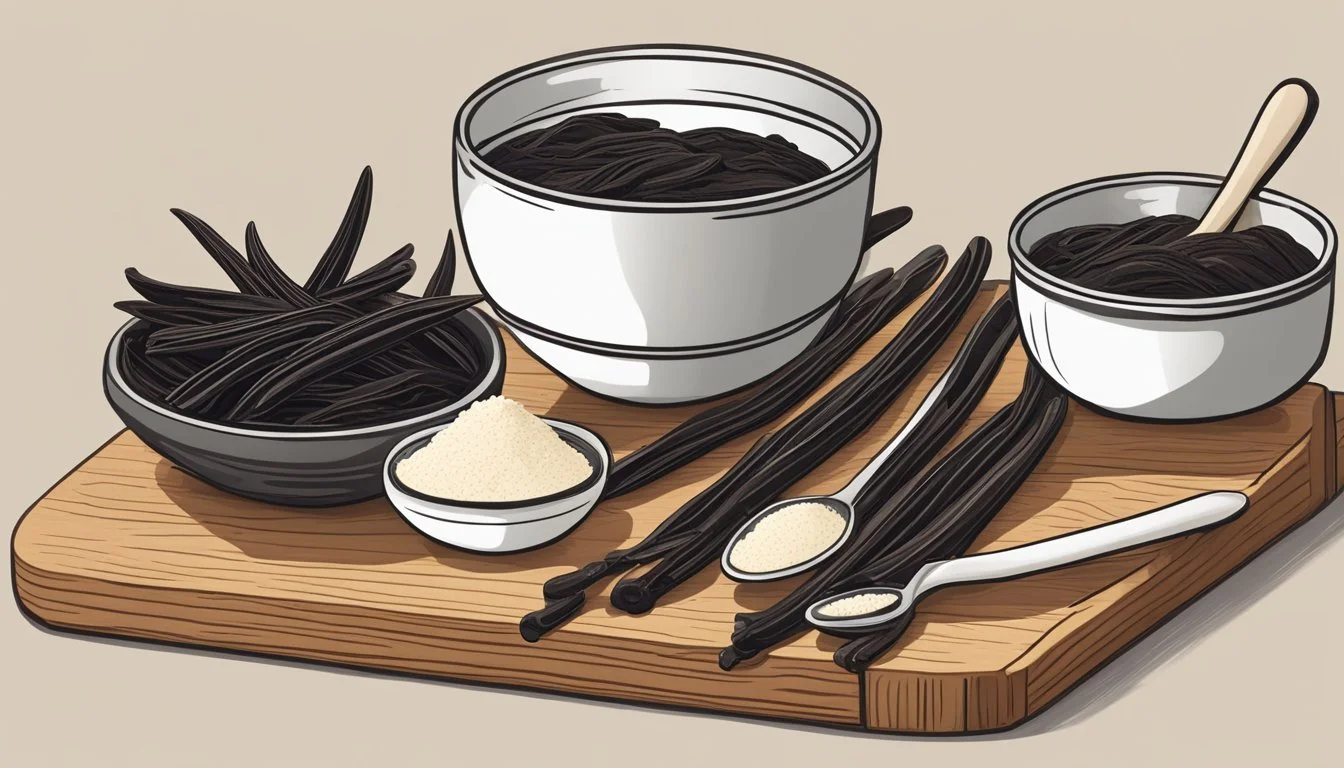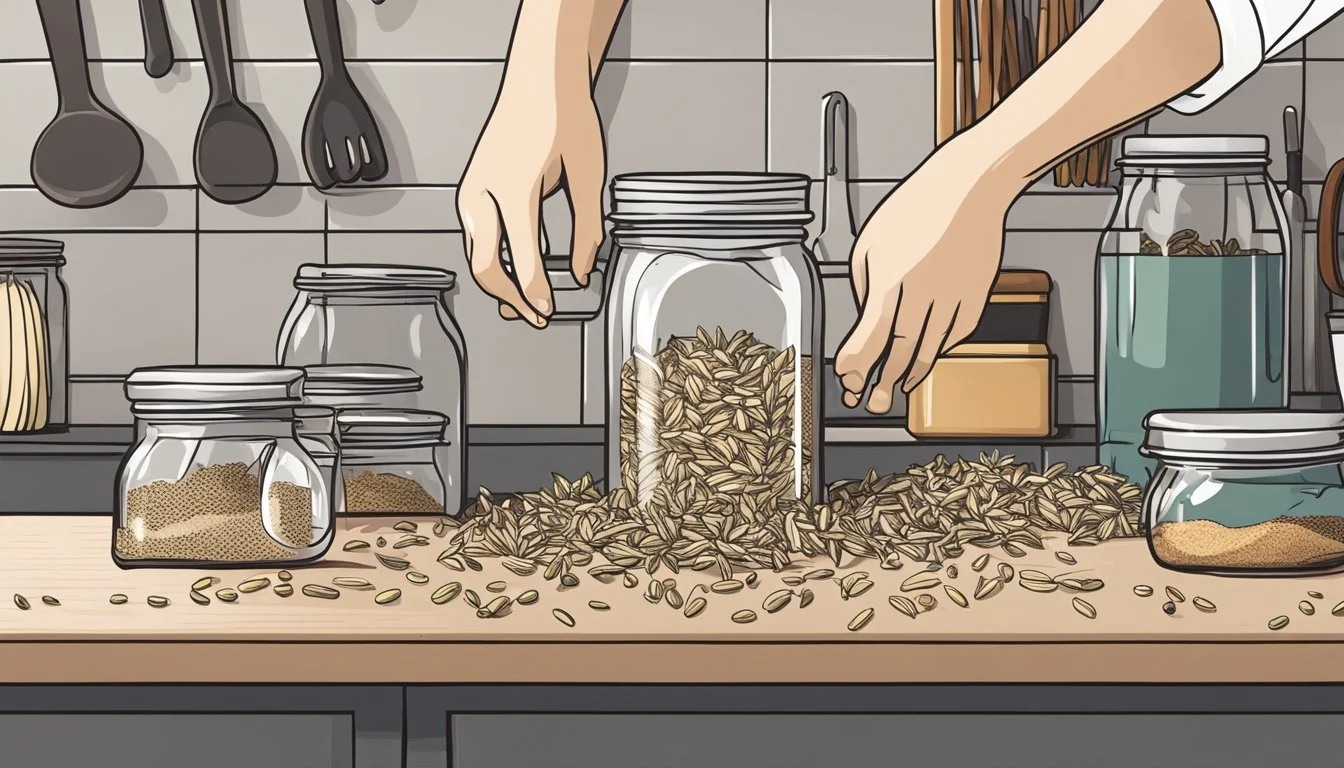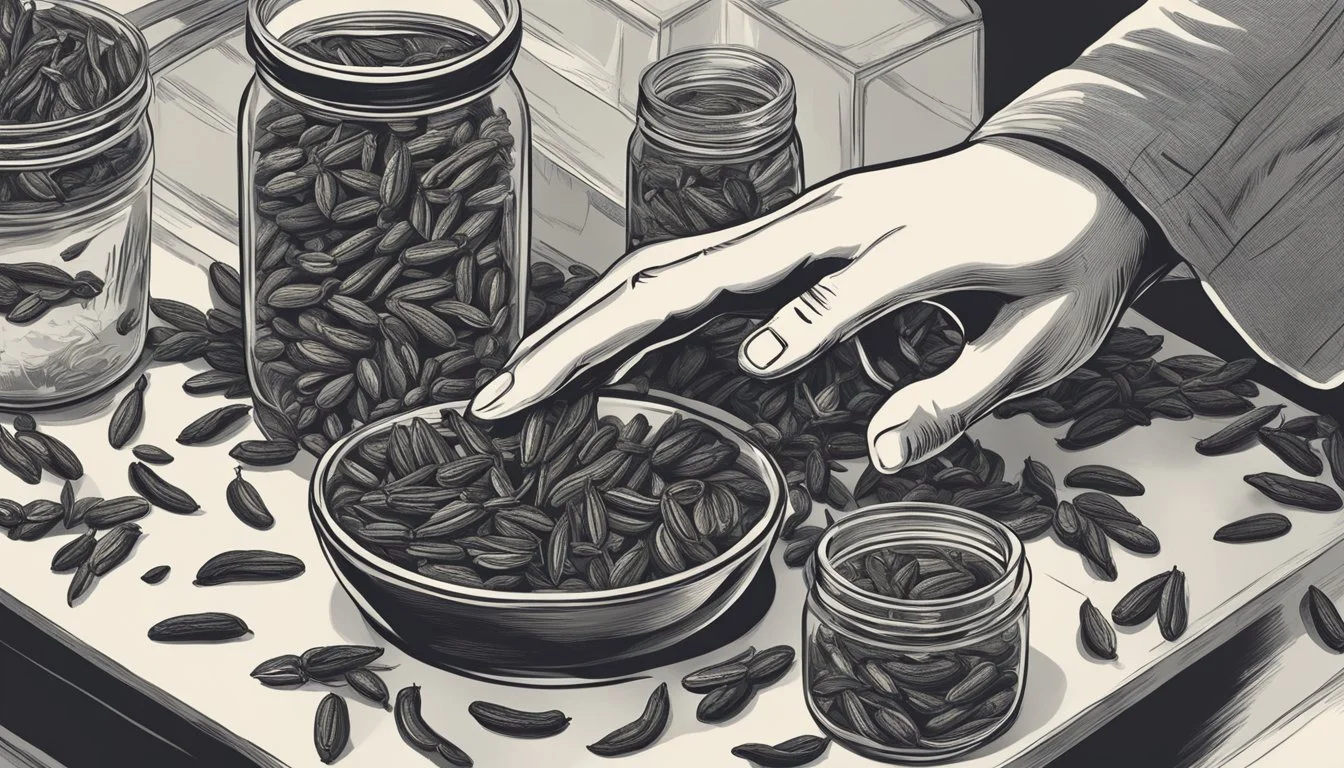Does Vanilla Beans Go Bad?
Shelf Life and Storage Tips
Vanilla beans, with their rich, aromatic essence, are a delight in both baking and cooking, but their shelf life is a question that many culinary enthusiasts ponder. Yes, vanilla beans can go bad if not stored properly. Improper storage might lead to mold growth or the beans becoming hard and dry, making them unsuitable for use.
When stored correctly, vanilla beans can last between six months to two years. Keeping them in a cool, dark place in an airtight container is essential to maintaining their potency and flavor. Avoid exposure to moisture to prevent mold, which would indicate the beans have spoiled.
Proper care can significantly extend the lifespan of these coveted beans, ensuring that their fragrant, unique flavor can be enjoyed in your culinary creations for a considerable duration. By understanding how to store vanilla beans effectively, you can avert the disappointment of finding your prized ingredient compromised.
Understanding Vanilla Beans
Vanilla beans are prized for their distinct flavor and rich aroma, which come from the compound vanillin. Understanding the varieties and characteristics of these beans can help ensure optimal quality and use in culinary applications.
Varieties of Vanilla Beans
There are several different varieties of vanilla beans, each with unique qualities and flavors. Bourbon-Madagascar vanilla beans are known for their creamy, sweet flavor with rich vanillin content. Mexican vanilla beans are slightly spicy with a subtle smoky note, making them a versatile choice for many recipes. Tahitian vanilla beans are broader and have a floral, fruity aroma, often used in desserts where a more nuanced flavor is desired.
Characteristics of High-Quality Vanilla Beans
High-quality vanilla beans should be plump and moist with a dark, almost oily appearance. They should be supple to the touch and flexible without breaking. Fresh beans contain visible vanillin crystals, which give them their robust flavor and aroma. The scent should be strong, sweet, and characteristic of the specific variety. Avoid beans that are dry, brittle, or have an unpleasant odor. Mold indicates spoilage and renders the beans unusable. Properly stored, these beans can retain quality for up to two years.
Storage Fundamentals
Proper storage of vanilla beans ensures that they remain fresh, flavorful, and retain their potency for extended periods. Essential factors include maintaining suitable temperature and humidity levels and selecting appropriate containers.
Ideal Conditions for Preservation
Vanilla beans thrive best when stored in a cool, dark place away from direct sunlight. The optimal temperature for storage is room temperature, ranging from 68-77°F (20-25°C).
Excessive heat or cold can degrade the beans and diminish their flavor. It's crucial to maintain low humidity to prevent mold growth and other moisture-related issues. Beans should never be stored in a refrigerator as the cold environment is too harsh and may dry them out.
Ensuring a consistent temperature helps maintain the beans' natural oils and flavors, maximizing their shelf life, which can extend up to two years.
Selecting the Right Containers
Choosing the right container is paramount to preserving the quality of vanilla beans. Airtight containers such as glass jars or sturdy plastic wrap are preferable.
Glass jars are excellent because they are impermeable and prevent external odors from contaminating the beans.
If glass jars are unavailable, beans can be wrapped in plastic wrap and then placed in an aluminum foil to provide added protection from light and air.
Plastic storage containers can also be used but should be food-grade and free from any residual odors. Keeping the beans secure in these containers minimizes exposure to air and moisture, helping retain their rich aroma and flavor.
Storing the beans in small quantities rather than large batches prevents repeated exposure to air, which can significantly prolong their shelf life.
Shelf Life of Vanilla Beans
Vanilla beans, when stored properly, can maintain their aromatic quality for an extended period. Factors such as the condition of the beans and storage methods heavily influence their longevity and potency.
Fresh vs. Aged Beans
Fresh vanilla beans typically exhibit a glossy, pliable appearance with a strong, rich fragrance. If stored in a vacuum-sealed bag or airtight container, they can remain in optimal condition for up to two years. Proper storage away from direct sunlight and heat further enhances their shelf life.
Aged beans, while still usable, often lose some of their moisture content and become brittle. The aromatic compounds degrade over time, reducing their flavor intensity. Labels indicating the purchase date can assist in tracking the age of the beans.
Indicators of Quality Deterioration
Quality deterioration in vanilla beans manifests through several key signs. Mold growth is one clear indicator that the beans are no longer suitable for use. Beans may also discolor, turning from a deep brown to a lighter, less appealing shade.
Additionally, a loss of fragrance is a significant indicator of decreased freshness. Dryness and brittleness suggest the beans are aging past their prime. Monitoring these parameters helps ensure that the vanilla beans add the desired depth to culinary dishes.
Common Storage Mistakes
Proper storage of vanilla beans is crucial to maintain their flavor and prevent spoilage. Incorrect storage can lead to issues like mold growth and loss of flavor.
Avoiding Moisture and Odors
Moisture is a frequent culprit for spoiling vanilla beans. When vanilla beans are exposed to too much moisture, they can develop mold. To avoid this, it is essential to store them in an airtight container. Glass jars and vacuum-sealed bags are good options.
Additionally, vanilla beans can absorb odors from their surroundings. Strong smells from spices, garlic, or onions can affect their flavor. To prevent this, ensure the beans are stored away from other strong-smelling foods. Placing a piece of parchment paper around the beans before sealing them can also help.
Problems with Refrigeration
Storing vanilla beans in the refrigerator may seem like a good idea, but it can actually cause problems. The cold environment can lead to the beans drying out, jeopardizing their moisture content. Dried-out beans become hard and brittle, making them difficult to use.
Moreover, the refrigerator can be a source of moisture and odors, both detrimental to vanilla beans. Instead of refrigerating, it's recommended to keep the beans in a cool, dark place, away from direct sunlight and temperature fluctuations.
By avoiding these common storage mistakes, one can ensure their vanilla beans remain fresh and flavorful.
Signs of Spoilage
Detecting spoilage in vanilla beans involves observing visual and textural changes, as well as noting any alterations in scent and flavor.
Visual and Textual Changes
Mold Growth: One of the most obvious signs that vanilla beans have gone bad is the appearance of mold. If there are any visible mold spots, it is a clear indicator of spoilage, and the beans should be discarded.
Discoloration: Fresh vanilla beans usually have a dark brown to blackish hue. Beans that appear excessively dark, shriveled, or have any unusual discolorations might be past their prime.
Texture: Vanilla beans should be somewhat pliable and slightly oily to the touch. If they feel excessively dry and brittle, the flavor compounds have likely degraded, reducing the bean's quality.
Changes in Scent and Flavor
Aroma: Vanilla beans typically have a rich, aromatic scent. If the beans have an off or fermented smell, it is a sign that they have gone bad. A lack of the usual strong vanilla aroma can also be an indication of spoilage.
Flavor: The flavor of vanilla beans should be strong and distinct. Vanilla beans that have gone bad may taste bland or have developed an off flavor. Over time, as the beans dry out, the flavor compounds diminish, leading to a less intense taste.
Regularly checking stored vanilla beans helps in identifying these changes early and ensures that they are still suitable for culinary use.
Extending Vanilla Beans' Lifespan
Proper storage techniques and freezing can significantly extend the lifespan of vanilla beans by preserving their flavor and preventing mold or drying out.
Effective Techniques to Keep Beans Fresh
Vanilla beans must be stored in airtight containers to maintain their quality. Glass jars or vacuum-sealed packages are ideal for this purpose. Beans should be wrapped in wax paper before placing them in the container to prevent exposure to air and moisture.
High-proof alcohol can act as a preservative. Submerging beans in alcohol like vodka (at least 40% alcohol) not only maintains the beans' freshness but also infuses them with additional flavor.
Cool, dark places such as a pantry are the best locations to store vanilla beans, as fluctuations in light and temperature can degrade their quality.
The Role of Freezing in Preservation
Freezing vanilla beans is an effective method to prolong their shelf life. First, wrap the beans securely in plastic wrap or aluminum foil. Then place them in an airtight container before freezing. This method preserves both flavor and aroma by protecting the beans from environmental factors.
Frozen beans should be thawed slowly at room temperature before use to maintain their texture and flavor. Avoid frequent thawing and refreezing, as this can introduce moisture and lead to mold growth.
Using Vanilla Beans in Cooking
Vanilla beans are prized for their intense and aromatic flavor, making them a valuable ingredient in a variety of culinary applications. They can be utilized in diverse ways to enhance both sweet and savory dishes.
Extracting Maximum Flavor
To extract the best flavor from vanilla beans, start by splitting the pod lengthwise with a sharp knife. This reveals the tiny seeds, which hold much of the vanilla's essence.
Scrape these seeds out and mix them directly into your dish. Scraping the seeds into cream or milk imparts a strong vanilla flavor, ideal for making ice cream or custards.
For infusing alcohol like vodka or rum, submerge the scraped pods in the liquid to create homemade vanilla extract. This method not only preserves the pods but also extracts their essence fully.
Vanilla pods themselves can be used to infuse flavor. Add them to a pot of simmering liquid for savory dishes or poached fruits. Remove the pods before serving to avoid an overly strong flavor.
Incorporation into Recipes
Vanilla seeds can be used directly in various baked goods, such as cakes, cookies, and muffins. Their presence ensures a rich, pronounced vanilla taste.
For creamy desserts like ice cream or custards, blend the scraped seeds into the custard base. The visible seeds add a gourmet touch.
In savory dishes, use vanilla sparingly. An example is adding vanilla to a seafood marinade or a rich, creamy sauce for a unique twist. The goal is to complement, not overwhelm, the primary flavors.
When making homemade vanilla extract, use a ratio of 1 vanilla bean per 1 cup of alcohol. Let it steep for several weeks to achieve the desired potency.
By utilizing the entire vanilla bean, both the seeds and pods, you can maximize their culinary potential, enriching a wide range of dishes with their unmistakable flavor.
Additional Usage of Vanilla Beans
Vanilla beans are highly versatile and can be utilized in various inventive ways beyond their typical use in recipes. These methods help extend their usability and maximize their natural flavor and aroma.
Making Vanilla Sugar and Other Infusions
Vanilla sugar is created by infusing sugar with the rich fragrance of vanilla pods. To make vanilla sugar, simply split a vanilla bean and scrape the seeds into a jar of sugar. Add the pod as well, seal the jar tightly, and let it sit for about two weeks. This infuses the sugar with a deep vanilla aroma, perfect for baking or sweetening beverages.
Vanilla beans can also be used to infuse liquids such as milk, cream, or spirits. Placing a split vanilla pod in the liquid and letting it sit for a few days imparts a delicate, natural flavor. This technique is especially useful in making vanilla extract or enhancing the taste of homemade ice cream and sauces.
Rehydrating and Repurposing Spent Pods
Spent vanilla pods still hold residual flavor and can be repurposed. To rehydrate dried pods, soak them in warm water for a few hours. Once softened, they can be used in simmering liquids like syrups or stews to extract the remaining flavor.
Another way to reuse spent pods is to grind them into a fine powder after they have been completely dried. This vanilla powder can be added directly to recipes for an extra layer of flavor or used to make vanilla sugar as previously mentioned. Reusing pods ensures that every part of the vanilla bean is utilized without waste.
Deciding When to Replace Vanilla Beans
Deciding when to replace vanilla beans involves evaluating their cost-effectiveness and considering suitable alternatives. Proper assessment ensures that culinary creations maintain their intended flavor and quality.
Evaluating Costs and Benefits of Fresh Beans
Fresh vanilla beans can be expensive, but they offer a superior quality and flavor that many culinary enthusiasts find irreplaceable. Over time, the beans can dry out or develop mold if not stored correctly. This diminishes their rich, sweet aroma and makes them difficult to use in recipes requiring fresh vanilla.
Checking the expiration date and observing for signs like discoloration, sour smell, or visible mold is crucial. Even with proper storage in a cool, dark place, beans might only last up to two years.
Economically, replacing beans before they completely spoil ensures optimal flavor in dishes and prevents waste. Many chefs opt to buy in smaller quantities to maintain freshness and reduce the potential loss.
Opting for Alternatives
When fresh vanilla beans become less viable due to cost or availability, alternatives like vanilla extract or vanilla powder can be more practical. Vanilla extract is a liquid form that saves time and effort when infusing vanilla flavor into dishes. It has a longer shelf life compared to beans.
Vanilla powder, made from ground vanilla beans, is another robust alternative. It’s excellent for dry mixes and baking, offering a different texture without compromising flavor.
Understanding each alternative's benefits can help balance the need for high-quality flavor and cost management. Fresh beans are irreplaceable in some contexts, but extracts and powders serve well in everyday culinary applications.

